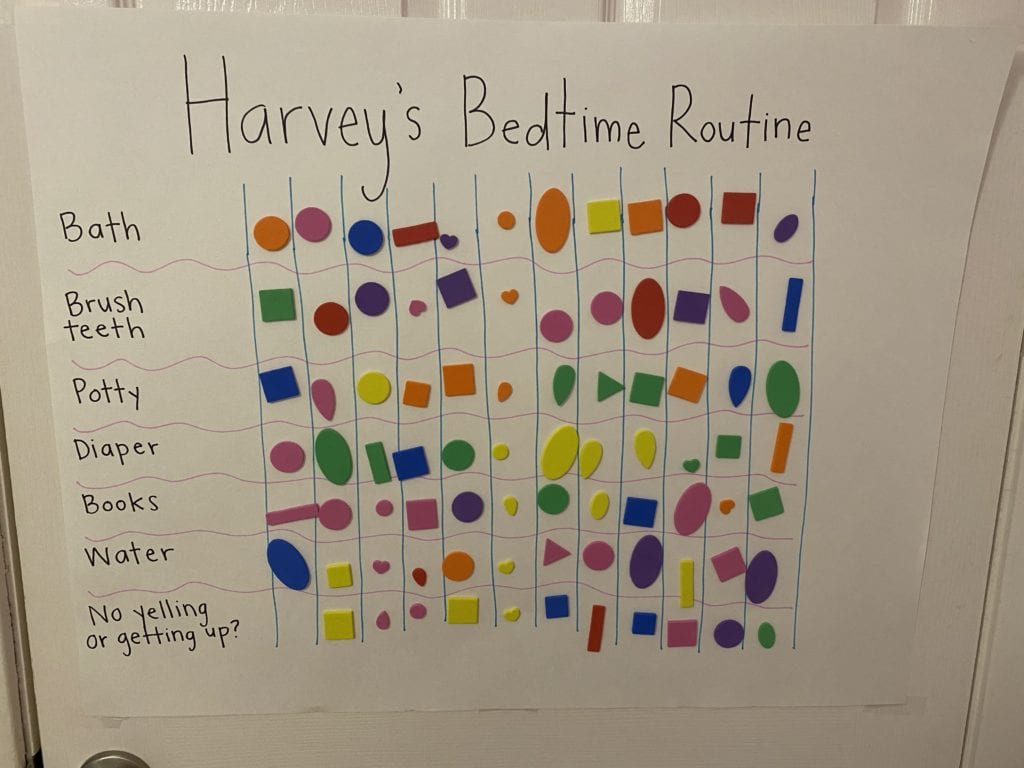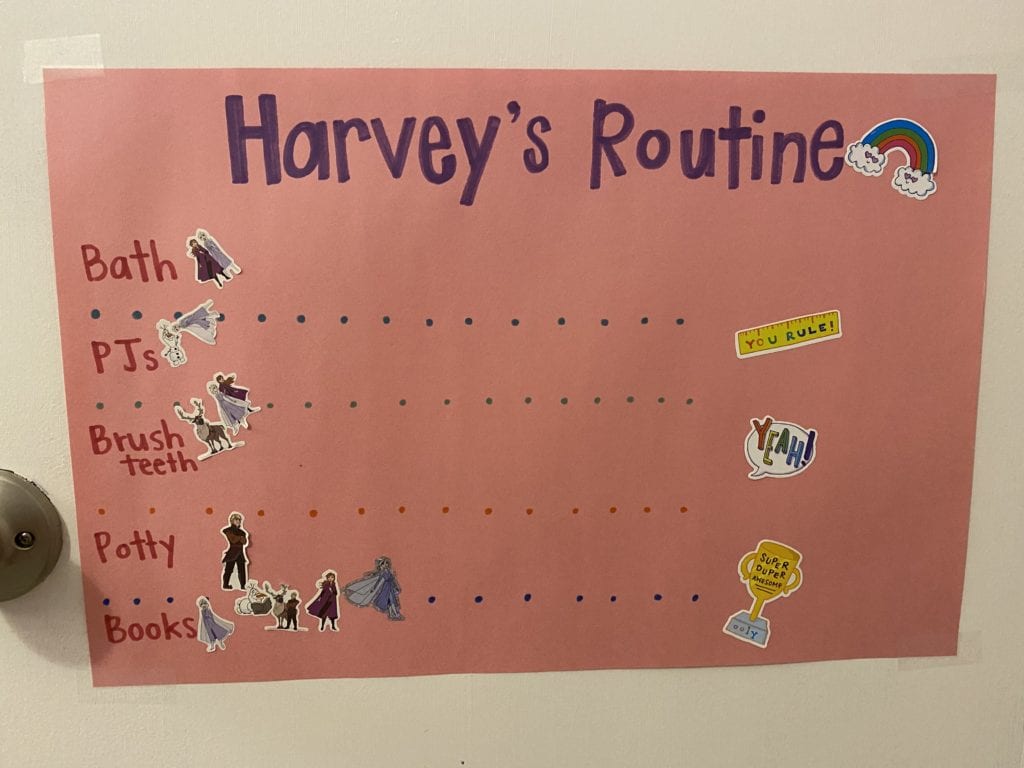It shouldn’t have surprised me when we slowly started facing more bedtime battles with my now 3-year-old. For literally years after sleep training, we had zero sleep struggles. When we transitioned to her big girl bed, she even refused to get out of it on her own for a while. She would wake and call for us to come get her. I guess you could say we were pretty spoiled in the sleep department. 12-hour nights, 2-hour naps (minimum)…yes, we were spoiled.
The fact that I’m a baby and toddler sleep consultant is almost irrelevant here. I know what needs to be done and what is to be expected at every stage from 0 to 4 years old, but it’s simply different working with your own kids.
So, when my daughter Harvey started delaying bedtime and getting out of bed multiple times after we said our goodnights, I treated it as a phase and didn’t do much else about it…until I knew I had no choice.
Setting Bedtime Boundaries
When I work with parents of toddlers, I always make sure to emphasize the importance of boundaries and setting clear expectations. Our toddlers don’t miss a beat. The second we give up control, they take it and run (and hide it somewhere ridiculous). So, I started by giving her choices to make bedtime more fun — but also by making it very clear that certain choices belonged to her daddy and me.
For example, we say when it’s bedtime, but she gets to choose her pajamas. She must sleep in her own bed, but she can choose her stuffed animals. We only read two books each night, but she gets to decide which books are read. We say when she’s allowed to get up each morning, but she gets to choose what color light comes on her toddler clock at wake time (highly suggest a toddler clock if you have a child 22 months or older).
Anyway, we simply had to be more firm at night. She’s the sweetest child, but she’s still a child. Who can blame her for wanting to practice the newfound independence that comes with a big girl bed? It’s a whole new world, and it was our job to show her the rules.
Routine Chart to the Rescue
Our saving grace came in the form of a routine chart. Her nightly excuses were continuing to grow, and it was clear that we needed a change. It’s like she wasn’t getting the quality time she needed during that bedtime routine, as if we were rushing through it.
So, I wrote down all of her excuses (“potty” and “drink of water” being the most popular) and created a chart. I let her choose the stickers, and for the first week or two, she was given a treat each morning if she didn’t yell or come out of her room after we closed the door.
She was absolutely elated. It did drag out the routine each night, but I think that was necessary. Over time, we just naturally stopped with the treats. She did so much better! We covered all of our bases when it comes to potential excuses, so she had a tough time coming up with a reason to yell for us or leave the room.
Waiting for the blue light on her toddler clock to come on each morning also became a special ritual for her. Sure, she darts out of her room at 7:00 a.m. SHARP, but I absolutely can’t complain about that.
I think it’s easy for us to feel so overwhelmed in certain stages of toddlerhood, feeling as if we’ve lost all control. The thing is, our children thrive off of routine, consistency, and a little bit of structure. Taking the time to create those boundaries, even if it takes a while to make them permanent, is beyond worth it for everyone. I don’t have everything figured out, but my 3-year-old is staying in her bed…so I’ll call that a win.




















